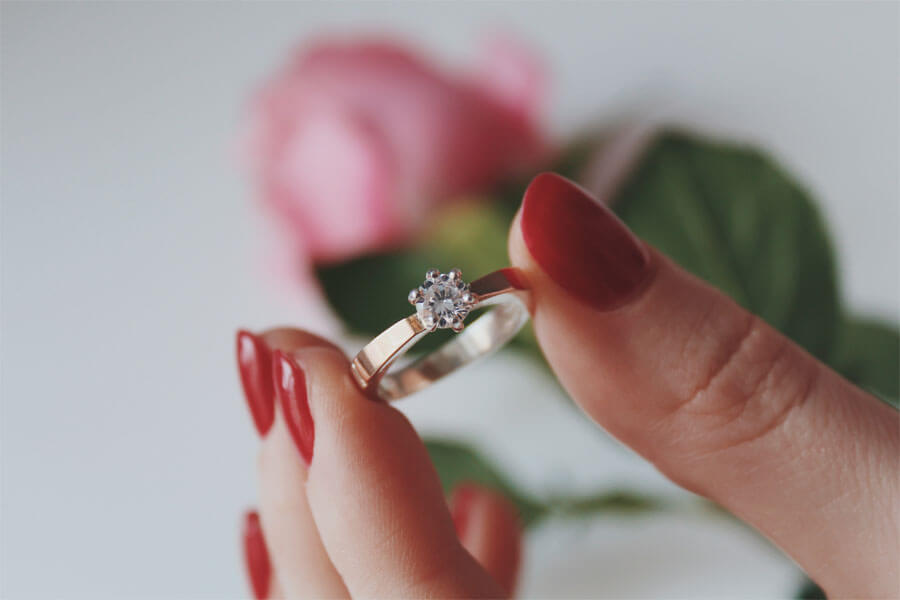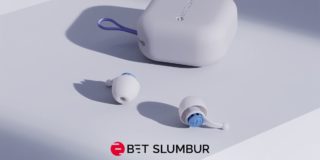Diamonds are sold in carats, which is characterized as ct. The word carat is borrowed from the word “carob” seed which was the original unit of measure used by diamond traders. The size of a diamond is often confused with the weight of the diamond– which is a measurement of weight. The size of a diamond is influenced by the shape and weight of the diamond.
A carat is a weight measurement unit used for precious stones such as diamonds and pearls equivalent to 200 milligrams (0.2 grams).
It should not be confused by karat, which is the purity of gold, pure gold being 24 karats.
The superiority of a diamond has nothing to do with its size, as it is often a misconception. Two diamonds can be of equal carat weight but have different price tags based on other diamond characteristics such as cut, clarity and color, often referred to as the four Cs. Different people admire different qualities in a diamond; therefore, it is important to know what the person you are buying for prefers. You can focus on this when searching for the ideal diamond for them.
As a diamond’s carat sizes increases, so does its price tag. This is for the larger the diamond, the rarer it is. In one million of mined rough stones, lesser than one is large enough to generate a 1 carat finished diamond-this being one of the many reasons why diamonds are that costly. It is important to work within your budget. Another factor that determines the price of a diamond is its carat weight; as carat weight increases, so does its price.
An example of the variations in price for diamonds of equal quality by varying carat weight is as follows:
| Carat weight | 1.00 | 2.00 | 3.00 |
| Price per carat | $6000 | $12000 | $18000 |
| Total price | $6000 | $24000 | $54000 |
To interpret the table, one can see that for a 1.00 ct. diamond ring, it retails at $6000 per carat yet for a 2.00-carat diamond ring, 1.00 ct. retails at $12000.
Once you have established the size of the diamond you want, you are now wondering what other differentiating qualities can you use to select the diamond you want to buy? Well, the additional qualities you can look out for are the 4 Cs.
Color
The first C is color. Diamonds are also sorted according to their color. Diamonds have color variations ranging from shades of brown, yellow, grey, and even colorless. These colors are categorized in terms of alphabets ranging from D-Z. Experts recommend that the best diamonds are those that fall between D, F, G, H, I and J and claim that the nearly colorless diamonds are the most desirable diamonds to purchase. This claim is attributed to their sparkly nature and their quality of appreciation in value with time.
Clarity
The other C is the diamond’s clarity. Clarity is the measure or state of being clear in appearance and style of the diamond. Now, what is meant by the clarity of a diamond? Clear diamonds are purer and freer of impurities. Just like with color, diamonds are categorized depending on their clarity. Clearer diamonds are preferred; hence they tend to be more expensive, however worth the money. Most clear diamonds are found under category I.
Carat weight
A diamond is measured in terms of its carat weight starting from 0.25 carats. It is important to note that as the price of a diamond exponentially increases with its carat weight; however, the size is not directly related. Between 0.25 carats and 2.00 carats, the carat weight can be used to tell the size of the diamond. So, for such a case, how does size vary with carat weight? A 2.00 ct. diamond ring is bigger than a 1.00-carat diamond ring. Therefore, if you want a big ring, carat weight will be helpful in this case.
Cut
Cuts are used to carve the diamond into the desired shape and give it a sparkle. A diamond’s cut is the symmetry, proportioning, finish and polishing given to a diamond. A diamond’s cut can be categorized by determining its brightness, polish, durability, weight ratio and symmetry. A diamond’s cut can range from excellent to poor. It goes without saying that excellent cuts are more expensive and has a maximum number of facets. The beauty of a diamond is greatly dependent on the diamond’s cut as combined with the shape it is influential on the diamond’s ability to shine and sparkle.
The shapes include;
- Round
- Princess
- Cushion
- Oval
- Emerald
- Heart
- Pear
- Marquise
- Asscher
- Radiant
Diamond Carat-Size Comparison
With that in mind, we can interpret the relationship between size, weight, and diameter can be demonstrated in a table as follows:
| Carat weight | 1.00 | 2.00 | 3.00 |
| Diameter (mm) | 6.50 | 8.20 | 9.40 |
| Crown (mm2 ) | 33.2 | 52.8 | 69.4 |
From the table, it is evident that an increase in one unit carat weight does not automatically double the diameter of the diamond. However, an increase in diameter automatically increases the crown area and the perceived size. Knowing the length and width of a diamond can also be used to determine its size. Diamonds of the similar shape and carat weight can still seem to have different sizes depending on the cut proportions. The more deeply cut diamond will have a smaller diameter.
Now, it is important to us a chart to determine the characteristics that are close to what you are looking for. A diamond chart will include the following information.
Approximate size
There are diamond images provided in the chart, and they are drawn to scale, meaning the size in the picture is close to the actual size of a 1.00 ct. excellent cut diamond for the given spaces. Diamonds with longer surfaces such as the oval, emerald, marquise, pear seem larger than the round and square-shaped diamonds; however, round cut diamonds are the most popular despite it being the most expensive of the shapes, followed by the princess cut diamond.
Measurements
These measurements include the length and the width and correspond to those of a 1 carat of the shape of the diamond that is well cut. They are given in millimeters.
Crown area
It is used to show the visual size of the diamond as it would appear when placed on a ring. However, it is vital to note that even though some shapes such as the oval appear bigger than the round, their actual surface area is equal; the difference in size is just a matter of perception. This, however, does not apply to all shapes compared to a princess cut diamond; an oval diamond has a larger surface area.
Misconceptions About Size and Weight
Despite the relationship between size and carat weight of a diamond, the weight of the carat is not the diamond size as many people believe. They are different entities that relate to each other but have distinguishing properties.
Also, the bigger the size of a diamond, does not automatically dictate its price. The shape and number of facets also influence a diamond’s price.
Even though oval-shaped diamonds appear bigger than round and square diamonds, it is always not the case as diamonds of equal carat weight can have different shapes.
Deciding on which diamond ring to get your partner while proposing can be stressful. This due to the many variables that affect the quality of the ring, and this is where a chart comes in handy. If your partner has specific characteristics they like in a diamond, you can identify the appropriate diamond for you. With this in consideration, we have provided you with free downloadable charts that you can use to make that decision. It gives you an aerial view of how the diamond looks when set on the ring. Download now.
The size is dependent on your partner’s preference or your budget size. Size is one of the varying factors that affect the price of a diamond.
Yes. Because other factors like color, shape, cut and clarity affect the price of a diamond.
Choosing the ideal diamond for you or your partner is a bit confusing, but with a diamond chart, it becomes easier. A diamond can be categorized with shape, carat weight, color and cut. It is important to learn these characteristics as they are used to price diamonds, and with that in mind, you can choose a diamond cut that meets your needs. If you implement the basics discussed in this article while shopping for a diamond cut, you can manage to get one that suits your specifications and fits within your budget.
Looking For Document Management System?
Call Pursho @ 0731-6725516
Check PURSHO WRYTES Automatic Content Generator
https://wrytes.purshology.com/home
Telegram Group One Must Follow :
For Startups: https://t.me/daily_business_reads




